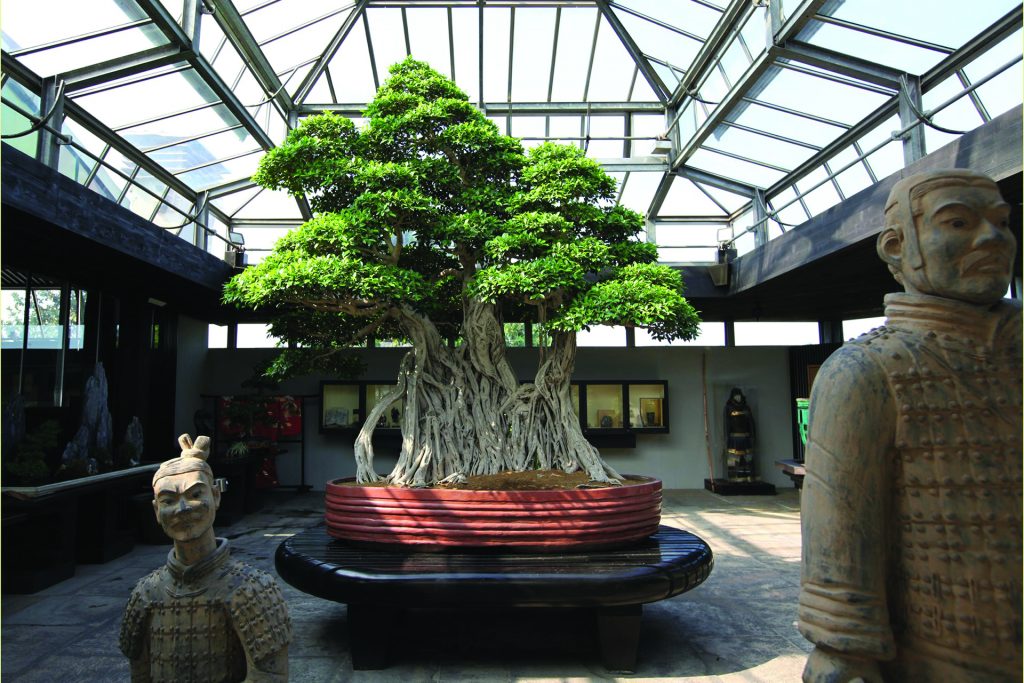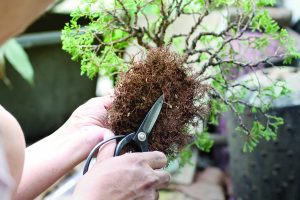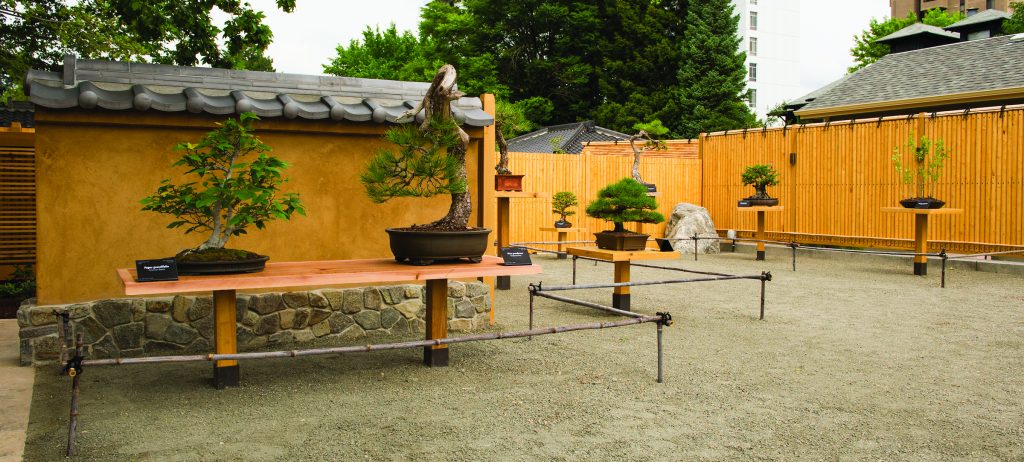Beautiful Bonsai
08 Dec 2020
Growing bonsai can instill patience and an appreciation for nature
By Sara Bruskin
Horticulture is an art form, and nowhere is that more apparent than in the cultivation of bonsai—potted plants typically pruned and trained to attain artistic shapes. Miniature bonsai resemble tiny mature trees, but bonsai can also grow to great heights. Large bonsai are often cultivated for decades, such as the 1,000-year-old Ficus retusa bonsai at the Crespi Bonsai Museum in San Lorenzo, Italy.
Bonsai is a Japanese practice originally inspired by the Chinese art of penjing, which often featured not only trees, but entire miniature landscapes, sometimes accented with small bodies of water and tiny figurines. Buddhist monks are largely credited for bringing bonsai to Japan, and bonsai cultivation is considered a meditative art that embodies the philosophy of Zen Buddhism. While the grower does shape the bonsai, it’s impossible to have total control over its form, and bonsai often include deadwood to highlight the beauty of transience.

The Japanese aesthetic wabi-sabi (which also evolved from Buddhist teachings) values imperfection, and impermanence and is evident in most bonsai, which are intentionally asymmetrical—often slanting to one side or cascading over a pot’s edge. Nature’s imperfect beauty is a tenet of bonsai cultivation.
Traditionally, bonsai are grown outdoors and many varieties can survive outside year-round in Colorado, including spruce, pine, birch, cypress and maple. If you’d like to add winter greenery to your home, good options for indoor bonsai cultivation include ficus, Chinese elm, dwarf pomegranate, Hawaiian umbrella, jade and Fukien tea trees. Bonsai are almost never propagated from seed, and most successfully grow from cuttings or layering.
Whatever type of bonsai you choose to cultivate, research, practice and patience are all necessary for learning how to properly grow it.

Crucial Care
Watering amounts, soil needs and light exposure will all vary, depending on your bonsai species. You’ll also need to periodically repot your bonsai when it gets root-bound (every one to five years, depending on its maturity and how fast your specific plant grows). This is very important for the tree’s health, as root-bound bonsai become stunted, and soil quality degrades over time. Carefully dislodge old soil from the roots, trim back any roots that have grown too long, and replant the bonsai in fresh soil. This is best done in early spring when the buds start to extend, so the bonsai has a whole growing season to recover.
 Repotting also gives you the opportunity to choose a container shape and color that complements your tree’s ever-changing form. Porcelain or ceramic pots and trays are traditional containers, but they must have drainage holes to prevent root rot. Some pots have base wiring, which can be used to anchor your tree in place. This is especially helpful for cascade-style bonsai, to ensure their lopsided weight won’t dislodge the tree from the soil.
Repotting also gives you the opportunity to choose a container shape and color that complements your tree’s ever-changing form. Porcelain or ceramic pots and trays are traditional containers, but they must have drainage holes to prevent root rot. Some pots have base wiring, which can be used to anchor your tree in place. This is especially helpful for cascade-style bonsai, to ensure their lopsided weight won’t dislodge the tree from the soil.
Wire is also used to train bonsai branches to grow into a particular shape. Because wire is strong and flexible, you can wrap it around branches and then gently bend it with pliers or another tool in the direction you want the branches to grow. Anodized aluminum wire is most commonly used, and is best for deciduous trees. Because of its strength, annealed copper is a good option for conifers and pines, but it’s a bit harder to work with. Be careful if you’re wiring your bonsai during a heavy growth period—if the tree grows too fast, wire indentations can mar the plant’s natural look.
Perfect Proportions
A big emphasis in miniature bonsai design is proportional growth. For a bonsai to emulate a fully grown tree in nature, the relative size of its trunk, branches and leaves (or needles) should all match the proportions of their full-size relatives. This requires a lot of thought and care in your approach to training and pruning. Some bonsai are designed to imitate trees in extreme environments, such as windswept trees that look as if regular gales have blown them in a certain direction.
There are many tutorials available on leaf-trimming, branch pruning and wire training to achieve your desired design. Mechanical clamps can also be used to shape thicker trunks and branches, while grafting can add new growth to your tree. These specialized skills take time to master, and fortunately we have a few great local resources for bonsai education.
Classes at Denver Botanic Gardens (DBG) include “Beginning Bonsai” and “Advanced Bonsai Design,” which provide basic and advanced bonsai skills. An impressive collection of bonsai trees in DBG’s Bill Hosokawa Bonsai Pavilion may inspire you. The pavilion’s plants are cared for by International Bonsai Master Larry Jackel, whose book, “Ponderosa Pines as Bonsai,” offers guidance on bonsai cultivation of a Colorado native tree.

The Rocky Mountain Bonsai Society has a collection of educational materials online at rmbonsai.org, and hosts an annual show and sale at DBG, which features more than 100 bonsai grown by local artists. You can also buy plants at the Bonsai Nursery in Englewood at any time of year.
When you’re growing weary of winter, why not bonsai? Most of us could benefit from practicing a little patience in anticipation of spring.












